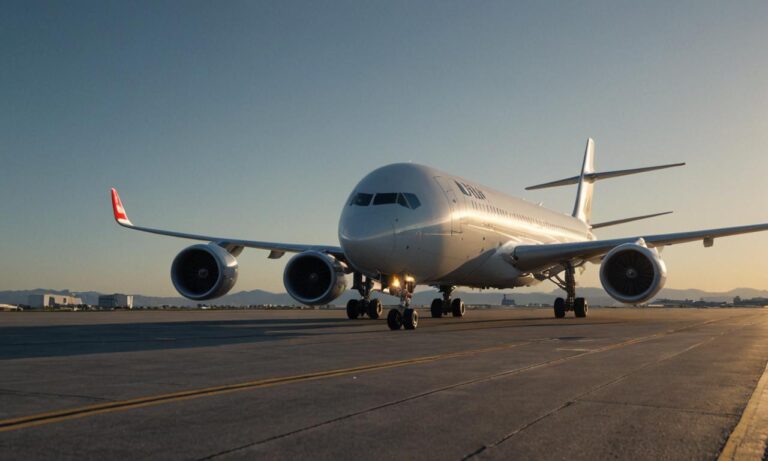In the realm of modern aviation, fuel efficiency is a paramount consideration for both environmental sustainability and economic viability. Airlines constantly seek to minimize fuel consumption to reduce costs and mitigate their environmental impact. Understanding which commercial aircraft stand out as the most fuel-efficient is crucial for airlines looking to optimize their operations.
Factors Influencing Fuel Efficiency
Several factors contribute to the fuel efficiency of commercial aircraft. These include aerodynamic design, engine technology, weight reduction measures, and operational practices. Manufacturers continuously innovate to enhance these aspects, resulting in significant improvements in fuel efficiency over the years.
Aerodynamic Design
The aerodynamic design of an aircraft plays a crucial role in its fuel efficiency. Sleek, streamlined shapes reduce drag, allowing the aircraft to fly more efficiently through the air. Features such as winglets further optimize aerodynamics by reducing wingtip vortices, which in turn decreases fuel consumption.
Engine Technology
Advancements in engine technology have led to the development of more fuel-efficient powerplants. High-bypass turbofan engines, commonly used in modern commercial aircraft, offer superior fuel efficiency compared to older engine designs. Continuous research and development in engine technology aim to further improve efficiency and reduce emissions.
Weight Reduction Measures
Reducing the weight of an aircraft is another effective strategy for enhancing fuel efficiency. Manufacturers employ lightweight materials such as carbon composites and aluminum alloys in aircraft construction to achieve this goal. Additionally, innovative design approaches focus on minimizing unnecessary structural weight while maintaining safety standards.
Operational Practices
Efficient operational practices also contribute to fuel savings. Airlines utilize advanced flight planning systems to optimize routes, altitudes, and speeds for maximum fuel efficiency. Additionally, techniques such as single-engine taxiing and optimized takeoff and landing procedures help minimize fuel consumption during ground operations.
Leading the Pack: The Most Fuel-Efficient Aircraft
Several commercial aircraft models stand out for their exceptional fuel efficiency, setting new standards in the industry. Among these, the Airbus A320neo and the Boeing 787 Dreamliner deserve special mention.
| Aircraft Model | Fuel Efficiency |
|---|---|
| Airbus A320neo | 15-20% improvement over previous generation models |
| Boeing 787 Dreamliner | 20-25% improvement over similarly sized aircraft |
The Airbus A320neo incorporates advanced aerodynamics, fuel-efficient engines, and innovative technologies to deliver significant fuel savings compared to its predecessors. Similarly, the Boeing 787 Dreamliner boasts groundbreaking design features and advanced materials that contribute to its exceptional fuel efficiency.
As the aviation industry continues to prioritize sustainability and cost-effectiveness, the quest for fuel efficiency remains ongoing. Manufacturers, airlines, and regulators collaborate to push the boundaries of innovation, resulting in the development of increasingly fuel-efficient commercial aircraft. By understanding the factors influencing fuel efficiency and embracing technological advancements, airlines can reduce their environmental footprint and enhance their bottom line.
Environmental Impact of Commercial Aviation
Aside from fuel efficiency, commercial aviation’s environmental impact is a significant concern. The aviation industry contributes to carbon emissions, noise pollution, and air quality degradation. Efforts to mitigate these impacts include the development of alternative fuels, noise reduction technologies, and emissions trading schemes.
Alternative Fuels
One approach to reducing aviation’s environmental impact is the adoption of alternative fuels. Biofuels derived from sustainable sources, such as algae or waste biomass, offer the potential to significantly lower carbon emissions compared to traditional jet fuel. Research and development efforts aim to scale up production and ensure the viability of alternative fuel options for widespread use in aviation.
Noise Reduction Technologies
Noise pollution from aircraft operations can have adverse effects on communities near airports. To address this issue, aircraft manufacturers invest in noise reduction technologies. These include improved engine designs, quieter landing gear, and modified flight procedures to minimize noise during takeoff and landing.
Frequently Asked Questions
| Question | Answer |
|---|---|
| How do airlines optimize fuel efficiency during flight? | Airlines optimize fuel efficiency through advanced flight planning systems, choosing optimal routes, altitudes, and speeds to minimize fuel consumption. |
| What are some future trends in improving fuel efficiency? | Future trends in improving fuel efficiency include the development of electric and hybrid-electric propulsion systems, as well as the integration of artificial intelligence for more precise flight operations. |






